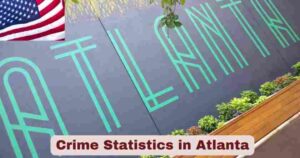Immigration Rates in Chicago 2025
Chicago’s immigration rates in Chicago 2025 continue to reflect the city’s role as a major destination for international migration, though comprehensive 2025 statistics remain limited due to ongoing data collection processes. The most recent complete data available from official government sources extends through December 2024, while current immigration enforcement operations in September 2025 provide insight into ongoing immigration activities affecting the metropolitan area. Understanding these patterns requires careful analysis of both historical data trends and current enforcement activities that shape Chicago’s immigration landscape.
The current immigration situation in Chicago 2025 is significantly influenced by federal enforcement operations launched in September, including “Operation Midway Blitz” which represents a substantial escalation in immigration enforcement activities. This federal intervention demonstrates how Chicago’s sanctuary city policies continue to create tension between local and federal immigration objectives, directly impacting immigrant communities throughout the metropolitan area. The intersection of ongoing humanitarian needs and increased enforcement activities defines the complex immigration environment that Chicago faces in 2025.
Key Immigration Stats & Facts in Chicago
| Immigration Metric | Most Recent Data | Data Current Through |
|---|---|---|
| Total New Arrivals from Southern Border | 51,648 | December 18, 2024 |
| Airplane Arrivals | 5,209 | December 18, 2024 |
| Total Bus Arrivals | 946 | December 18, 2024 |
| Individuals Resettled | 17,183 | December 18, 2024 |
| Individuals Reunited with Sponsors | 7,689 | December 18, 2024 |
| Current Shelter Census | 2,487 | December 18, 2024 |
| Chicago Metro International Migrants 2024 | 96,000+ | July 2024 |
| Total International Migrants Since 2020 | 238,000 | March 2025 data |
| Chicago Metro Population Growth 2024 | 70,762 | July 2024 |
| Individuals Awaiting Placement | 0 | December 18, 2024 |
Data Sources: City of Chicago New Arrivals Dashboard (as of December 18, 2024), U.S. Census Bureau Population Estimates, Illinois Policy Institute Analysis
The most recent verified data shows that Chicago has welcomed 51,648 new arrivals from the southern border since August 31, 2022, with the city’s official dashboard last updated on December 18, 2024. The 2,487 individuals currently in shelter represents those requiring ongoing housing assistance, while the successful resettlement of 17,183 individuals demonstrates Chicago’s capacity to manage humanitarian operations effectively. The zero individuals awaiting placement status indicates significant operational improvements in processing efficiency compared to earlier periods when emergency facilities were overwhelmed.
The Chicago metropolitan area received 96,000+ international migrants during 2024, contributing to regional demographic changes despite significant domestic outmigration. The 946 bus arrivals processed since operations began represents an average of more than two buses weekly, each requiring immediate accommodation and processing through Chicago’s emergency response systems. These figures represent only documented arrivals through official channels and exclude individuals arriving independently or through commercial transportation methods.
Current Immigration Enforcement Operations in Chicago September 2025
| Enforcement Operation | September 2025 Status | Operational Details |
|---|---|---|
| “Operation Midway Blitz” | Active September 2025 | DHS-led enforcement operation |
| Federal Agent Deployment | 200+ agents | Great Lakes Naval Base |
| Operation Duration | Six weeks estimated | Seven days per week |
| Participating Agencies | ICE and CBP | Coordinated federal effort |
| Target Focus | Criminal violations | Sanctuary policy opposition |
| Local Law Enforcement | Limited cooperation | Sanctuary city policies |
| Community Impact | Heightened concerns | Immigrant community fears |
| Legal Support Response | Advocacy mobilization | Pro bono services expansion |
Data Sources: Department of Homeland Security Announcements, NPR reporting September 8, 2025, Military.com reporting September 4, 2025
The Department of Homeland Security announced “Operation Midway Blitz” in September 2025 as a targeted immigration enforcement operation specifically focused on Chicago and Illinois. More than 200 agents, including Customs and Border Protection personnel, are deployed to the Great Lakes Naval Base for this operation. Local officials report the operation will run seven days a week for approximately six weeks, representing one of the most significant federal enforcement presences in Chicago’s recent history.
DHS specifically targets what it calls “criminal illegal aliens who flocked to Chicago and Illinois” because of sanctuary policies, creating direct conflict with Chicago’s sanctuary city ordinances that limit local law enforcement cooperation with federal immigration authorities. The operation demonstrates escalated federal intervention in Democratic-led cities, with Chicago joining other major metropolitan areas facing increased enforcement activities. Community advocacy organizations have mobilized legal support networks in response to heightened immigration enforcement, expanding pro bono services and community education efforts.
Historical Arrival Processing Statistics in Chicago Through 2024
| Category | Number / Status | Notes / Timeline |
|---|---|---|
| Bus Transportation Processing | 946 buses completed | Ongoing arrivals tracked |
| Airport Processing Volume | 5,209 individuals | June 2023 – December 2024 |
| Emergency Shelter Capacity | 2,487 residents | Active management |
| Police Station Housing | 0 individuals | Successfully transitioned |
| Airport Emergency Housing | 0 individuals | Normal operations restored |
| Landing Zone Processing | 0 individuals | Real-time processing achieved |
| Sponsor Reunification | 7,689 completed | Family-based placements |
| Independent Resettlement | 17,183 achieved | Housing stability outcomes |
Data Source: City of Chicago Office of Emergency Management and Communications (OEMC) Dashboard, December 18, 2024
Chicago’s arrival processing statistics through 2024 demonstrate significant operational achievements in managing humanitarian operations at unprecedented scale. The completion of 946 bus processing operations since August 2022 represents systematic accommodation of large-scale arrivals requiring immediate housing, medical screening, and case management services. The 5,209 airplane arrivals processed since June 2023 indicates a secondary transportation route that has become increasingly important for international migration patterns affecting Chicago.
The operational status showing zero individuals currently housed in police stations, airports, or emergency landing zones represents major progress from earlier periods when these facilities served as overflow emergency housing. The 17,183 successful resettlement outcomes combined with 7,689 sponsor reunifications demonstrate effective pathways for new arrivals to achieve housing stability and family reunification. The current 2,487 individuals in emergency shelter represents the remaining population requiring placement assistance while transitioning to permanent housing arrangements.
Metropolitan Population Impact Statistics Through 2024
| Population Indicator | 2024 Data | Cumulative Since 2020 |
|---|---|---|
| International Migration Gain | 96,000+ | 238,000 |
| Domestic Migration Loss | 45,787 | 347,466 |
| Natural Population Increase | 19,388 | 62,000 |
| Net Population Change | +70,762 | -46,000 |
| National Growth Ranking | 9th place | 2024 numeric growth |
| State Domestic Migration Ranking | 48th nationally | Outmigration rate |
| Cook County Change | Population increase | Largest numeric gains |
| Illinois Rural Counties Declining | 64 of 102 | Widespread rural decline |
Data Sources: U.S. Census Bureau Population Estimates Program, Illinois Policy Institute Analysis March 2025
The Chicago metropolitan area gained 96,000+ international migrants during 2024, contributing to total population growth of 70,762 residents despite significant domestic outmigration. Since April 2020, 238,000 international migrants have arrived in the Chicago metropolitan area, while 347,466 residents moved to other states, creating complex demographic shifts that define current population trends.
The natural population increase of 19,388 in 2024 demonstrates demographic vitality through births exceeding deaths, contributing 62,000 net residents through natural increase since 2020. However, the cumulative net population decline of 46,000 since April 2020 illustrates how substantial domestic outmigration partially offsets gains from international migration and natural increase. Chicago’s 9th place national ranking for numeric population growth in 2024 reflects continued importance as an international migration destination, while Illinois’ 48th place ranking for domestic migration highlights ongoing challenges with resident retention.
Housing and Shelter Services Capacity in Chicago 2024
| Housing Service Category | December 2024 Status | Operational Capacity |
|---|---|---|
| Emergency Shelter System | 2,487 active residents | Multiple facility types |
| Hotel Contract Accommodations | Ongoing utilization | Flexible capacity management |
| Temporary Housing Programs | Operational | Transitional placements |
| Independent Living Transitions | 17,183 successful | Permanent housing achieved |
| Family Reunification Placements | 7,689 completed | Sponsor-based housing |
| Police Station Emergency Housing | 0 current | Successfully eliminated |
| Airport Emergency Accommodations | 0 current | Normal operations restored |
| Community Partnership Network | Expanding capacity | Faith-based and nonprofit |
Data Source: City of Chicago Department of Family and Support Services, New Arrivals Dashboard December 18, 2024
Chicago’s housing and shelter services capacity through 2024 represents a sophisticated emergency response system that has evolved significantly since operations began in August 2022. The current emergency shelter system housing 2,487 residents operates across purpose-built emergency shelters, converted community spaces, and contracted hotel accommodations, representing substantial improvement from earlier periods requiring police station and airport emergency housing.
The elimination of emergency housing in police stations and airports demonstrates operational maturation, with zero individuals currently housed in these emergency locations. The 17,183 successful resettlement outcomes and 7,689 family reunification placements represent individuals and families who have transitioned from emergency shelter to independent living arrangements or sponsor family reunification. The expanding community partnership network continues developing sustainable pathways for housing stability through collaboration with faith-based organizations, community groups, and private housing providers.
Educational and Social Services Integration Through 2024
| Service Integration Area | 2024 Impact | Program Development |
|---|---|---|
| Chicago Public Schools | Significant enrollment increase | ESL program expansion |
| Adult Education Services | Growing participation | Workforce preparation focus |
| Healthcare Access Programs | Community health expansion | Trauma-informed care |
| Legal Aid Services | Immigration assistance growth | Pro bono attorney networks |
| Mental Health Support | Specialized trauma programs | Culturally appropriate services |
| Language Interpretation | Multi-language capacity | Community-based interpreters |
| Job Training and Placement | Skills development programs | Employment readiness focus |
| Child Care and Family Support | Age-appropriate programming | Educational integration support |
Data Sources: Chicago Public Schools Administrative Reports, Chicago Department of Public Health, Community Service Organizations
Educational and social services integration through 2024 demonstrates Chicago’s comprehensive approach to supporting immigrant populations beyond emergency housing and basic needs provision. Chicago Public Schools experienced significant enrollment increases requiring expanded English as a Second Language (ESL) programs, additional bilingual teaching staff, and specialized support services for students with interrupted educational backgrounds due to migration experiences.
Adult education programs expanded substantially to meet growing demand for English language learning, General Educational Development (GED) preparation, and workforce readiness training programs specifically designed for immigrant populations. Community health centers increased capacity for emergency and primary healthcare services with particular emphasis on preventive care and mental health support for individuals who experienced trauma during migration journeys. The legal aid services network grew through partnerships with pro bono attorneys and legal organizations specializing in immigration law, providing crucial support for asylum applications and other immigration legal processes.
Economic Impact Assessment Through 2024
| Economic Impact Category | Financial Scale | Service Allocation |
|---|---|---|
| Municipal Expenditure | $600+ million | August 2022-December 2024 |
| Housing Services Costs | Primary expense | Emergency shelter operations |
| Support Services Allocation | Multi-departmental | Case management and basic needs |
| Federal Cost Reimbursement | Partial coverage | State and federal coordination |
| Educational System Costs | Enrollment-driven increases | K-12 and adult education |
| Healthcare Services Expenses | Community health expansion | Emergency and primary care |
| Economic Integration Outcomes | Early-stage development | Employment and entrepreneurship |
| Long-term Revenue Projections | Tax contribution growth | Integration-dependent outcomes |
Data Sources: City of Chicago Budget Office, Chicago Public Schools Financial Reports, Municipal Department Expenditure Analysis
The economic impact assessment through 2024 demonstrates substantial municipal investment in humanitarian response operations, with Chicago expenditure exceeding $600 million on housing and support services for new arrivals since August 2022. These costs primarily support emergency shelter operations, temporary housing programs, case management services, and basic needs provision during initial settlement periods for individuals and families seeking asylum or other immigration relief.
Educational system costs increased significantly through Chicago Public Schools enrollment growth, requiring additional funding for ESL programs, bilingual education services, and support staff to address unique educational needs of immigrant students. Healthcare services experienced expansion costs through community health center capacity increases and specialized trauma-informed care programs. Early economic integration outcomes show emerging employment participation and small business development among immigrant communities, with long-term projections anticipating tax revenue contributions that may help offset initial settlement costs as populations achieve economic stability.
Federal-Local Relations Impact in Chicago 2025
| Relationship Dynamic | September 2025 Status | Policy Conflict Areas |
|---|---|---|
| Sanctuary City Policies | Active enforcement | Federal cooperation limits |
| ICE Operation Response | Limited local cooperation | Sanctuary ordinance compliance |
| Community Trust Maintenance | Priority objective | Immigrant community engagement |
| Legal Challenge Preparation | Advocacy coordination | Constitutional law analysis |
| Public Safety Integration | Crime data transparency | Evidence-based policy defense |
| Federal Funding Implications | Potential reductions | Grant program vulnerabilities |
| Intergovernmental Coordination | State-local alignment | Governor Pritzker support |
| Constitutional Law Questions | Tenth Amendment issues | Local authority defense |
Data Sources: Chicago Corporation Counsel Office, Illinois Governor’s Office, Immigration Legal Advocacy Organizations
Federal-local relations in Chicago during September 2025 demonstrate significant tension between municipal sanctuary city policies and federal immigration enforcement operations. The launch of “Operation Midway Blitz” specifically targets Chicago’s sanctuary policies, creating direct conflict between local ordinances limiting cooperation with federal immigration authorities and federal enforcement objectives requiring local law enforcement assistance.
Chicago’s maintenance of sanctuary city policies during increased federal enforcement represents commitment to community trust-building with immigrant populations, despite potential federal funding implications and enforcement pressure. Illinois Governor JB Pritzker’s support for sanctuary policies provides state-level backing for Chicago’s position, though constitutional law questions regarding local authority and federal supremacy remain contentious. The city’s public safety integration approach emphasizes crime data transparency to counter federal arguments linking immigration enforcement to public safety outcomes.
Future Outlook
Immigration patterns in Chicago will likely continue reflecting both ongoing humanitarian needs and evolving federal enforcement policies throughout late 2025 and beyond. The current “Operation Midway Blitz” enforcement operation demonstrates sustained federal commitment to challenging sanctuary city policies, suggesting continued tension between local and federal immigration objectives. Chicago’s operational capacity improvements, evidenced by the elimination of emergency housing in police stations and airports, position the city to better manage future arrival surges while maintaining commitment to humanitarian response principles.
The $600+ million municipal investment in immigration services since 2022 represents substantial local commitment to humanitarian operations, though long-term sustainability depends on federal reimbursement policies and successful economic integration outcomes for immigrant populations. The 17,183 successful resettlement outcomes and growing economic participation among immigrant communities suggest positive integration trends that may contribute to Chicago’s economic development. However, ongoing enforcement operations and potential federal funding reductions create uncertainty for program continuity and service capacity maintenance. Chicago’s experience managing large-scale immigration operations will likely influence national policy discussions and serve as a model for other metropolitan areas facing similar humanitarian challenges while navigating federal enforcement pressures.
Disclaimer: The data research report we present here is based on information found from various sources. We are not liable for any financial loss, errors, or damages of any kind that may result from the use of the information herein. We acknowledge that though we try to report accurately, we cannot verify the absolute facts of everything that has been represented.







